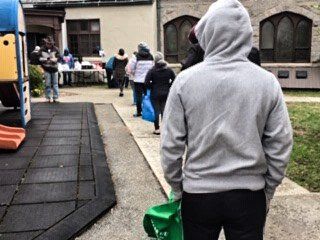Bringing People Together
Making life better for people in need is always a guiding light for nonprofit groups. From feeding our neighbors who are food insecure to housing people who have lost their homes to assisting veterans as they readjust to civilian life and helping survivors of domestic violence rebuild their lives, nonprofits are an integral part of helping people get back on their feet. And it requires money to make that happen. So just how do nonprofits get their funding? In part from your donations, but also from other nonprofits dedicated to supporting smaller associations.
One of the important funders in New York state is Episcopal Charities, which provides approximately $1 million in grant money annually. It is an organization steeped in the tradition of faith, but operating in the nonsectarian world for the greater good of all. “We are welcoming to everyone, no one is excluded,” says Patrick Bergquist, director of programs for Episcopal Charities.
Episcopal Charities supports programs that are connected to a parish of the New York Diocese. They cover a wide range of issues --- food insecurity, summer camp, music enrichment, immigration and much more in the 100 or so outreach programs that they support, including donations to CHHOP run Fred’s Pantry.
“We’re not just a check or about funding,” explains Bergquist. “We make connections to other funders and we do strategic planning for the future to make sure that the organization that we are funding is sustainable. We don’t want to be the only funder. If we have a bad year and can’t fund as much, we don’t want an organization to fall apart.”
Getting A Grant
The New York Diocese is split into four regions and all grant requests must come through one of the parishes in the Diocese. There is an advisory committee in each region that is comprised of both lay people and ordained people in the area. The committee members have backgrounds in social work, or business, some are priests or deacons. “We have people who can look at a budget or other operational areas,” explains Bergquist. “We work with people to help them do what needs to be done. Many of the groups that we work with are volunteer led. We like to bring people in different nonprofits together.”
The advisory committee in each region visits the organizations that are requesting grants and checks on their programs, making sure to ask what exactly is needed in each case. They make recommendations to the Episcopal Charities board, who then have the final say as to the organizations that will get grants.
The World Now
Clearly, the Covid-19 crisis is the most pressing issue of the moment, impacting people on many levels, it has also created new levels of financial need for nonprofits geared to helping the most vulnerable in the community. The institutions that generally assist people have been hit hard and can’t always do what they have done in the past. Bergquist notes that the macroeconomy and the stock market are still strong, but the pandemic has hit those who are living marginally very hard, he explains that the service industry has pretty much been wiped out, a sector that once employed many people. “The economic shift will start with wealthy people and trickle down, while those paid in cash or under the table will be the last to see things get better,” says Bergquist. He looks to the 2008/2009 recession as an example of when the floor of need was raised and that level of need has stayed with us. “Now new levels of the floor have been set. Demand will level, but it will not fall off. There is a hole being dug both financially and socially.”
Going forward Bergquist does not see much relief from the levels of need currently seen. He points out that even if there is a vaccine or effective treatment for Covid-19, it will take years for the economy to come back. “We’re building connections between programs so we can spread out the funding as best that we can. We work with other funders and state agencies. Episcopal Charities tries to be a catalyst where change can happen and connections can be made,” concludes Bergquist.

